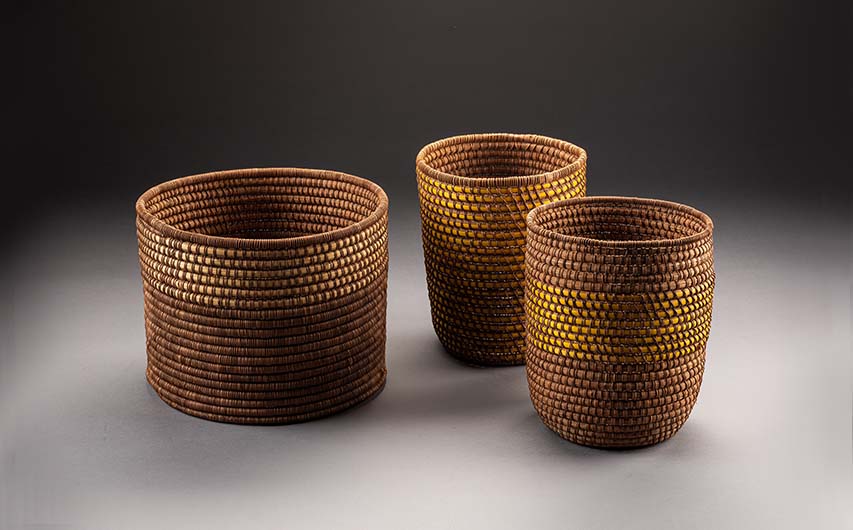
Los Curripaco son reconocidos por tejer canastos con la fibra de la palma de chiqui chiqui, también conocida como "marama", que crece a las orillas de los ríos del Guainía. Utilizan las técnicas de rollo y tejido en espiral, las cuales han hecho parte de su tradición por generaciones para fabricar diversos objetos de uso diario. Lo anterior se debe a que este material natural de textura áspera es compacto y fuerte. A pesar de que esta actividad ha sido desempeñada por hombres desde tiempos atrás, su éxito ha motivado a mujeres para que se introduzcan al oficio, acrecentando así la productividad artesanal de la comunidad.
The Curripaco people are renowned for weaving baskets with the fiber of the Chiqui chiqui palm, also known as Marama palm, which grows on the banks of the Guainía region’s rivers. They use the roll and spiral weaving techniques, which have been part of their tradition for generations, to craft several objects of daily use. The latter is due to this rough-textured natural material’s strength and compactness. Although this practice has been carried out by craftsmen since time immemorial, its success has motivated craftswomen to also enter the trade, thus increasing the community’s artisanal productivity.
Relacionados: Oficio artesanal; Artesanía; Cestería; Chiqui chiqui; Guainía